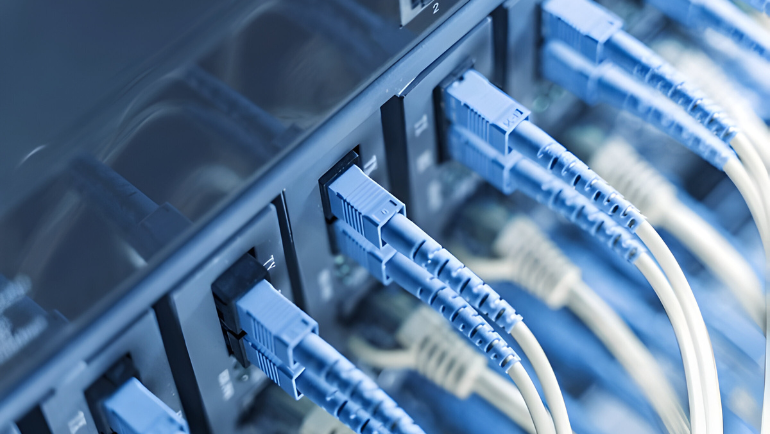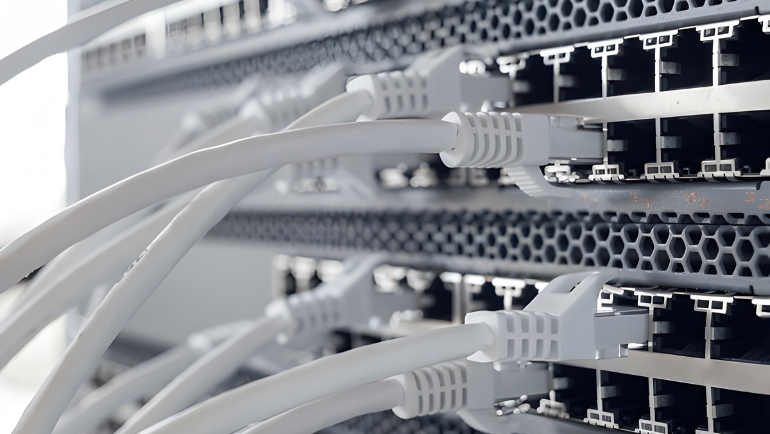
- Functionality
- Network Performance
- Installation
- Compatibility
- Management
- Number of devices
- Security
- Power Consumption
- Scalability
- Limitations
- Pros and Cons
- Pricing
- Future Expectations
The number of devices on the internet is growing continuously, creating network congestion, prompting enterprises to consider Ethernet splitter vs switch. Many opt for a dedicated router for every device connected to the network, which tends to increase in number. A cost-effective solution is to use an Ethernet switch or splitter, allowing you to connect more network devices through a single Ethernet connection. This blog will help you understand the difference between an ethernet switch and splitter, its functionality, performance, security and more.
Difference Between Ethernet Splitter and Switch
Enterprises are opting for ethernet splitters and switches due to the increasing number of users. Small businesses with fewer devices can utilize splitters, whereas ethernet switches offer unique benefits that make it leads the networking pathway. Let’s explore the difference between ethernet splitter and switch.
Ethernet Splitter vs. Switch: Functionality
An ethernet splitter is a small device utilized in a specific scenario where you have two devices but only one ethernet cable. The splitter allows you to convert a single ethernet line into two separate connections for each device. Moreover, an ethernet switch is a more versatile device connecting multiple devices to a single ethernet connection. Unlike an ethernet splitter, it intelligently routes the data packets to the intended recipient device.
Network Switch vs. Ethernet Splitter: Network Performance
In terms of ethernet splitter vs switch performance, an ethernet splitter equally divides the network bandwidth between the two connected devices. For example, if you have a 100 Mbps connection, each device gets around 50 Mbps. On top,splitter does not offer additional features like traffic management and congestion prevention on connections.
A network switch is a more advanced device and intelligently provides bandwidth to each port according to its requirements. Switches manage network traffic, reduce congestion and collisions by directing data packets only to the intended destination. This intelligent traffic management enhances overall network performance, especially in environments with devices requiring simultaneous network access.
Ethernet Splitter vs. Switch: Installation
The ethernet splitter is a small device that is easy to install and does not require hardware or software level configuration. Whereas, switches are slightly more complex to configure than a splitter. Unlike splitter, switch is not plug and play, it needs a proper configuration due to its highly intelligent management features.
Splitter vs. Switch: compatibility
Ethernet splitters and switches serve different purposes and have varying levels of compatibility with network devices. Splitters are simpler devices but simplicity comes with its limitations. They are compatible with basic networking set-up where networking needs are minimal. splitters does not support advanced networks.
Conversely, Ethernet switches are highly compatible with a wide range of devices and network configurations. Switches can manage multiple devices simultaneously without significant performance loss, making them ideal for SMBs (Small and Medium Business).
Ethernet Splitter vs. Switch: Management
An Ethernet splitter is a basic device that does not come with built-in intelligence or management capabilities. They are passive devices operating purely at the physical layer of the OSI model. It provides a straightforward, low-cost solution for essential networking needs.
An Ethernet switch offers extensive network management capabilities. Managed switches benefits businesses, allowing personalized network configuration and control over the network traffic. The features include VLAN (Virtual Local Area Network) support, QoS (Quality of Service) settings, traffic prioritization, and monitoring tools.
Ethernet Splitter vs. Switch: Number of Devices

An ethernet splitter divides your connection into two connecting devices at once. However, the number of connected devices in an ethernet switch varies with models and OSI Layers like layer 3 or layer 2. Generally, it can serve 4 to 50 devices simultaneously.
Ethernet Splitter vs. Switch: Security
When it comes to the splitter vs switch ethernet security, the switch sees a clear win as it comes with security features like VLAN, QoS, port security, and ACLs (Access Control List). These security features make ethernet switches a secure option for enterprises. Whereas, an ethernet splitter does not offer any security features.
Ethernet Switch vs. Splitter: Power Consumption
An ethernet splitter is a passive device which means it doesn’t need any external power to operate. On the other hand, the hub or switch can consume from 5 watts to 100 watts depending on the number of ports which leads to more heat generation. Enterprises can install heat sinks and fans for better thermal management.
Ethernet Switch vs. Splitter: Scalability
Scalability is crucial for enterprises for future proofing.In matter of ethernet switch vs. splitter scalability, switches are scalable, they connect multiple networking devices and are easily expanded by adding more switches. Enterprise can also upgrade their existing switch with an upgraded model. However, Splitters are not scalable, they can mostly connect two devices.
Ethernet Switch vs. Ethernet splitter: Limitation
The limitations of ethernet switch vs. splitter are as follows.
| Ethernet Splitter | Ethernet Switch |
| Limited to two devices | Power consumption |
| Reduced speeds because of shared bandwidth | More costly |
| No security features | Potential Single point of failure |
| No scalability | Complex to setup |
Ethernet Splitter vs. Ethernet Switch: Pros and Cons
Following are the pros and cons of Ethernet splitter and switch to help you decide a better choice for your business.
| Pros | Cons | |
| Ethernet Splitter | Low Cost | Mostly limited to two devices |
| Easy to setup | Reduced speed due to shared bandwidth | |
| Zero power consumption | – | |
| Ethernet Switch | Supports Multiple Devices | High power consumption |
| Intelligent management and security features | High upfront cost | |
| Highly scalable | Complex setup |
Ethernet Splitter vs. Switch: Pricing
Ethernet splitters are highly affordable but limited in functionality, making them a good choice for small businesses. An ethernet splitter costs you from $5 to $60, depending on the brand and model.
In contrast, Ethernet switches offer various features and functionalities, making them versatile and scalable solutions for enterprises. It ranges from $66 to $25,700 depending on the features and port counts. Computing Worlds has a whole range of ethernet switches and splitters for sale. Ethernet Splitters
Ethernet Switches
You can get a free bulk quote on the required ethernet switch or splitter.
Ethernet Splitter vs. Switch: Future Expectation
The future of both ethernet splitter or switch seems predictable, ethernet splitters are expected to maintain a stable trajectory in modern computer networking. They will be useful in scenarios where only minimal networking is required, such as temporary setups or environments with minimal bandwidth needs.
In contrast, ethernet switches are expected to see advancement and adoption across networking environments due to the increased popularity of IoT devices. This will increase data consumption and switches will evolve to support higher speeds (up to 10 Gbps), greater port densities, and enhanced management features.
Frequently Asked Questions
Is an ethernet splitter a good option for every networking environment?
No, ethernet splitters are best suited for basic and specific scenarios where mostly two devices need to share a single Ethernet connection, and high performance is not important.
Can I use a splitter to expand my network connection?
Yes, if you want to expand your wired connection then an ethernet switch is a good option.
If your connection is wireless then opt for a wireless extender or repeater. Ethernet splitters and switches have become an integral networking accessory in modern day technology. Small businesses can utilize splitters to provide internet to two devices but if you have a large network with multiple devices then opting for switch is a better option. Furthermore, switches offer security and scalability features designed to manage complex networks.
Enterprises also secures their wireless routers to protect their switches and network from ransomware and viruses. However, if you encounter any problem during configurations troubleshooting the router may fix the problem.
For more information about switches stay connected to the Computing Worlds blog.






